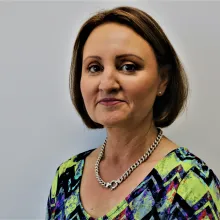
Early years behaviour support
Research summary
Students on the autism spectrum have unique learning needs that teachers may find challenging without support and professional learning.
Teachers in rural and remote communities may receive less support due to geographical isolation and a lack of access to opportunities. To meet the learning needs of students on the spectrum in these regions, teachers need support that is:
- effective
- ongoing
- cost effective
- delivered in a timely manner
- appropriate for their context.
The Early Years Behaviour Support Project (EYBSP) implemented case studies in five school communities in rural and remote parts of Queensland and New South Wales to address the needs of teachers working with early years students on the spectrum.
Research aim
The aim of the Early Years Behaviour Support Project (EYBSP) was to:
- support the professional learning of principals, teachers, and families in rural and remote school communities
- meet the complex and individual needs of early years students on the autism spectrum
- use cooperative planning to promote positive academic, social emotional, and behavioural outcomes for students
- promote parent/carer engagement with clear opportunities for meaningful participation
- help students by establishing and strengthening home–school communication.
Key elements
The project used a Teleconsultation Classroom (TCC) approach so that teachers could collaborate with specialists. The TCC approach involved a combination of:
- face-to-face visits
- phone conversations
- emails
- video conferencing.
The TCC approach helped teachers meet the complex and individual needs of some students on the autism spectrum by providing teachers with:
- a flexible, multidisciplinary approach to professional learning and support
- professional learning that teachers could access in their locations.
The project’s methods demonstrated positive results that could be applied to a range of urban, rural, and remote regions, such as:
- providing cost-effective and contextualised support
- promoting professional learning opportunities
- allowing professional relationships to develop despite distance and cost constraints.
Additional information
The approach used in the Early Years Behaviour Support Project (EYBSP) can help school communities to:
- improve communication, knowledge, and understanding of family, student, and school needs
- promote a partnership of shared ownership, commitment, and joint responsibility between on-site and off-site staff to help solve problems and achieve goals
- better identify and share school community needs, concerns, and perspectives
- strengthen the relationships between on-site and off-site staff to increase the expertise and resources of both parties
- collect data and monitor the outcomes of all participants over an extended period of time
- establish a consistent approach to creating and implementing support plans
- improve the skills, knowledge, and behaviours of all participants.
Our evidence base
The research team examined the five implemented case studies and found common factors that enabled the Teleconsultation Classroom (TCC) approach to successfully provide support.
The Early Years Behaviour Support Project (EYBSP) used a purposeful sampling method to find suitable school communities across rural and remote regions of Queensland and New South Wales.
The following table presents demographic information about the participating school communities:
| Case study | School and staff type | ABS ASGSa | ICSEAb | Enrolment information |
|---|---|---|---|---|
|
1 |
|
Remote |
833 students with 66% in bottom quarter |
370 total enrolments:
|
|
2 |
|
Remote |
1005 students with 30% in bottom quarter |
86 total enrolments:
|
|
3 |
|
Remote |
789 students with 77% in bottom quarter |
109 total enrolments:
|
|
4 |
|
Outer regional |
800 students with 67% in bottom quarter |
92 total enrolments:
|
|
5 |
|
Outer regional |
972 students with 24% in bottom quarter |
11 total enrolments:
|
|
a ABS ASGS: Australian Bureau of Statistics Australian Statistical Geography Standard b ICSEA: Index of Community Social-Educational Advantage |
||||
A wide range of participants were involved in interviews and worked with the team to collect data. Data was not collected from students due to their age. The 20 participants consisted of:
- 1 ancillary staff member
- 2 school-based specialist support staff members
- 3 principals
- 4 teachers
- 3 parents of early years students on the autism spectrum
- 7 research specialist support staff who implemented the Teleconsultation Classroom (TCC) approach.
The following table presents information about the participants:
| Case study | Staff | Parents/carers | Specialist support stuff | Student |
|---|---|---|---|---|
|
1 |
|
Parents/carers consented for child to be involved but did not want to participate. |
|
|
|
2 |
|
Mother |
|
|
|
3 |
|
Parents/carers consented for child to be involved but did not want to participate. |
|
|
|
4 |
|
Mother |
|
|
|
5 |
|
Mother |
|
|
The EYBSP used a qualitative case study research design because little research around the TCC approach has been conducted in schools. This research design allows the researcher the opportunity to develop definitions, data collection methods, and hypotheses for future research.
About case study research
Read more about the case study research.
The EYBSP research project aimed to answer the following question:
How could the trialling of a TCC approach:
- deliver a cost-efficient service delivery and support option to teachers in rural and remote regions
- promote professional learning and confidence in teachers in rural and remote regions
- more effectively implement support for the complex and individual learning needs of early years students on the autism spectrum?
The project considered further questions about how a TCC approach can:
- support the needs of students on the spectrum in inclusive classrooms in rural and remote regions
- be applied to a variety of regions, student needs, and educational contexts
- be developed, and what principles should guide it.
The research project was conducted using the following process:
Recruitment
The team sourced, contacted, and held initial consultations with the participating school community. A face-to-face consultation identified and discussed the needs of the family, student, and school.
Engage multidisciplinary team
A multidisciplinary team from Aspect was formed to align with the identified needs of the school community.
Assessment
The team assessed the education and technology needs of the school and student through interviews and core assessments. Before support could occur, baseline data was collected from:
- teacher and parent interviews, surveys, observations, and anecdotal notes
- student records
- a behaviour analysis about the student’s needs, and teacher confidence and satisfaction.
Preparation
In preparation for the support program, the team developed a plan of support, a TCC approach, and had the school community install appropriate classroom technology.
Implementation
The team implemented the support program and began to monitor and review the school community based on its needs.
Post-program support
After the support program, the team developed a follow-up and exit plan. The team then conducted interviews to collect data from the school community.
Findings
The initial findings from the project were used to inform Year 2 and 3 study and development training modules and resource materials, which were used to continue support of TCC and EYBSP in school communities.
The project used a thematic data analysis to answer the research questions. To find patterns in the data, the team used a rigorous process of data familiarisation, data coding, and theme development and revision. The team conducted the data analysis to help:
- provide evidence
- explain and illustrate data
- deepen understanding
- enable the participants’ voices to be heard.
Process
The TCC process in one case study involved:
- setting week-by-week goals
- providing support for scaffolding tasks
- scaling back expectations to ensure success
- providing real-time advice on issues and behaviours, e.g. help focused on what data to collect and record, what goals to set, how to develop a support plan and encourage learning
- problem-solving together
- identifying, trialling, and reflecting on strategies with the team
- quick feedback
- setting four goals for the student:
- encourage communication through exposure to Pragmatic Organisation Dynamic Display (PODD)
- reduce unscheduled time outside
- follow a visual schedule for three days of the school week
- use the timer to finish activities
- using a video to show how to implement new routines and lessons
- training teachers in how to simplify a visual schedule to better suit the student’s needs and ability level
- creating an individual support plan in collaboration with the school that looked at a range of areas of the student’s learning goals and responses to behaviours, as well as reducing factors causing anxiety
- forming a plan to address behaviour by looking at communication needs
- rating the student’s performance at the start and end of the term
- getting the whole-team approach in terms of behaviours, triggers for behaviours, and the most effective and practical strategies to put in place.
Outcomes
In this case study, the outcomes included:
- changes and improvements beyond what the shared community expected
- school staff gained a better understanding and increased confidence to support the student
- increased use of specific teaching strategies to support the student’s needs
- establishing a daily routine that included regular outside time, which reduced the student’s anxiety
- a more comprehensive and open process with more relevant and accurate learning needs identified
- behavioural improvements evident by Term 3 – the student became calmer and happier at school.
For more information about each case study, download the full report.
School communities
- School communities had greater levels of engagement when focusing on supporting inclusion.
- In the successful school communities, being prepared to adjust practices to meet the needs of students on the spectrum played a larger role than greater levels of understanding and experience.
- Successful school communities had a capacity, willingness, and motivation to reflect on and prepare for change.
- The TCC approach was a non-threatening way for school communities to engage with off-site professional development.
Relationships
School communities successfully built and sustained positive relationships with relevant stakeholders through:
- face-to-face visits
- long-term remote support
- processes to support positive communication
- collaboration and involvement of all key stakeholders, including parents/carers.
The research project found that participating teachers experienced reduced feelings of isolation while managing the needs of all students in their classes.
Face-to-face visits
The integration of face-to-face visits from specialists combined with remote support:
- provided a collaborative opportunity for all key stakeholders (parents/carers, teachers, principals, administrative staff, specialist support staff, and teacher aides)
- promoted a team approach of positive and collaborative partnerships to meet the needs of the students by consulting together on problems
- helped to identify contextual and individual needs of the school community
- established trust and rapport in the school community
- established communication networks across the school community
- provided the opportunity for assessment, discussion, and off-site observation to properly determine the current situation. Results suggest students with more challenging and complex needs require more personnel to be involved and more frequent face-to-face visits
- enabled a plan for the TCC approach to be developed that was responsive to the needs of the school community
- empowered stakeholders to identify what their needs were and how they wanted the approach to work.
Communication
Communication was the key factor in the success of the research project. The TCC approach enabled school communities to establish and sustain positive lines of communication. The integration of long-term, remote communication through emails, phone conversations, virtual collaboration, and face-to-face visits:
- provided opportunities to solve problems with practices through consultation
- enabled practices to be reviewed, refined, and revised in response to ongoing needs
- allowed professional development to continue beyond face-to-face visits
- kept the project’s goals as a key focus for all involved.
Sustainability
The utility of the TCC approach enabled sustainable inclusive practices that could support many students’ needs through:
- promoting the involvement of all stakeholders, including parents, through positive collaboration
- offering flexible delivery that was tailored to meet the individual needs of all involved.
Ongoing on-site and off-site contact allowed:
- practices to be tailored and revised in the long-term
- appropriate feedback and professional development
- access to practices that were developed by a multidisciplinary team.
As an additional benefit, many practices and resources had applications across the whole class, could be used with other students in the class or school, and were shared with other staff in the school community.
Commitment
The TCC approach required the commitment of time and resources from all involved parties. The project gave school communities permission to protect or commit time for students and their needs. While staff viewed the professional development provided as valuable, sustaining this collaboration over the long-term required allocated time to do so through teacher release time.
Benefits
Students across all five case studies reported improvements to:
- social engagement, participation, and positive behaviour
- literacy learning
- behavioural incidents
- anxiety.
Further benefits from the research project include:
- reduced feelings of isolation in the school community, and a greater sense of connectedness and collaboration
- increased teacher confidence
- increased teacher ability to advocate for students
- intensive, ongoing advice for teachers
- ongoing professional development for teachers
- access to multidisciplinary expertise for teachers
- improved relationships with all stakeholders.
Barriers
Barriers to the TCC approach included:
- turnover of staff
- student absenteeism
- students transferring out of school
- lack of suitable virtual collaborative software that was quick and easy to use, and a fear of using technology
- unsuitable internet capacity and connectivity in some rural regions
- time constraints
- lack of confidential private spaces for online consultation
- ongoing support needing to be sustained beyond the life of the project.
Schools of students with complex and individual needs would have liked:
- more face-to-face visits
- support to continue after the project.
Meet the researchers

Dr Jill Ashburner

Profesor Margot Brereton

Dr Susan Bruck

Dr Trevor Clark

Ms Vicki Gibbs

Trevor Russell

Dr Beth Saggers

Dr Christopher Edwards

Dr Cara Wilson
All researcher details including names, honorifics (for example ‘Dr’), and organisational affiliations are correct at the time of the project.
Publications from this project
Beth Saggers, Megan Tones, Jacqueline Dunne & Rachel Aberdein (2019). Tele-classroom consultation: promoting an inclusive approach to supporting the needs of educators, families and early years learners on the autism spectrum in rural and remote areas in contextually responsive ways, International Journal of Inclusive Education, doi:10.1080/13603116.2019.1609103
Articles informing this project
Koegel, Lynn Kern, Suzanne Robinson, and Robert L Koegel. 2009. ‘Empirically Supported Intervention Practices for Autism Spectrum Disorders in School and Community Settings: Issues and Practices.’ Handbook of Positive Behaviour Support, 149–176. New York: Springer.
Lindgren, Scott, David Wacker, Alyssa Suess, Kelly Schieltz, Kelly Pelzel, Todd Kopelman, John Lee, Patrick Romani, and Debra Waldron. 2016. ‘Telehealth and Autism: Treating Challenging Behaviour at Lower Cost.’ Pediatrics 137 (Supplement 2): S167. doi:10.1542/peds.2015-2851O
Lynch, Shane L., and Angela N. Irvine. 2009. ‘Inclusive Education and Best Practice for Childrenwith Autism Spectrum Disorder: an Integrated Approach.’ International Journal of Inclusive Education 13 (8): 845–859. doi:10.1080/13603110802475518
Saggers, B., D. Klug, K. Harper-Hill, J. Ashburner, D. Costley, T. Clark, S. Bruck, D. Trembath, A. A.Webster, and S. Carrington. 2018. Australian Autism Educational Needs Analysis – What are the Needs of Schools, Parents and Students on the Autism Spectrum? Full report and executive summary, version 2. Brisbane: Cooperative Research Centre for Living with Autism. Accessed 18 December 2018.
Sheridan, Susan M., and Thomas R. Kratochwill. 2007. Conjoint Behavioral Consultation:
Promoting Family-School Snell, Martha E., and Rachel E. Janney. 2000. ‘Teachers’ Problem-Solving About Children with Moderate and Severe Disabilities in Elementary Classrooms.’ Exceptional Children 66 (4): 472–490. doi:10.11772F001440290006600403
Soto-Chodiman, Rebecca, Julie Ann Pooley, Lynne Cohen, and Myra Frances Taylor. 2012. ‘Students with ASD in Mainstream Primary Education Settings: Teachers’ Experiences in Western Australian Classrooms.’ Australasian Journal of Special Education 36 (2): 97–111. doi:10.1017/jse.2012.10
Stahmer, Aubyn C., Aritz Aranbarri, Amy Drahota, and Sarah Rieth. 2017. ‘Toward a More Collaborative Research Culture: Extending Translational Science From Research to Community and Back Again.’ Autism 21 (3): 259–261. doi:10.1177/1362361317692950
Practices

Provide feedback on learning & behaviour
TEACHING PRACTICE
For student years
Helps students to
- stay motivated
- remain on-task for longer
- feel valued

Actively supervise your class
TEACHING PRACTICE
For student years
Helps students to
- feel safe and secure
- meet behavioural expectations

Give clear directions
TEACHING PRACTICE
For student years
Helps students to
- know what is expected
- perform tasks effectively

Model positive interactions
TEACHING PRACTICE
For student years
Helps students to
- build social-awareness
- interact with others

Support friendship skills
TEACHING PRACTICE
For student years
Helps students to
- interact with peers
- participate in activities

Model emotional literacy
TEACHING PRACTICE
For student years
Helps students to
- identify and respond to emotions
- regulate emotions

Teach self-regulation
TEACHING PRACTICE
For student years
Helps students to
- regulate their feelings
- regulate their behaviour

Teach social problem solving
TEACHING PRACTICE
For student years
Helps students to
- solve social problems
- become independent

Consistently use routines and schedules
TEACHING PRACTICE
For student years
Helps students to
- feel less anxious
- transition smoothly
- know what is coming next

Prepare students for transitions
TEACHING PRACTICE
For student years
Helps students to
- manage transitions
- be less anxious

Sustain collaborative partnerships - Collaborative Partnerships in Action
TEACHING PRACTICE
For student years
Helps students to
- feel connected
- develop positive relationships